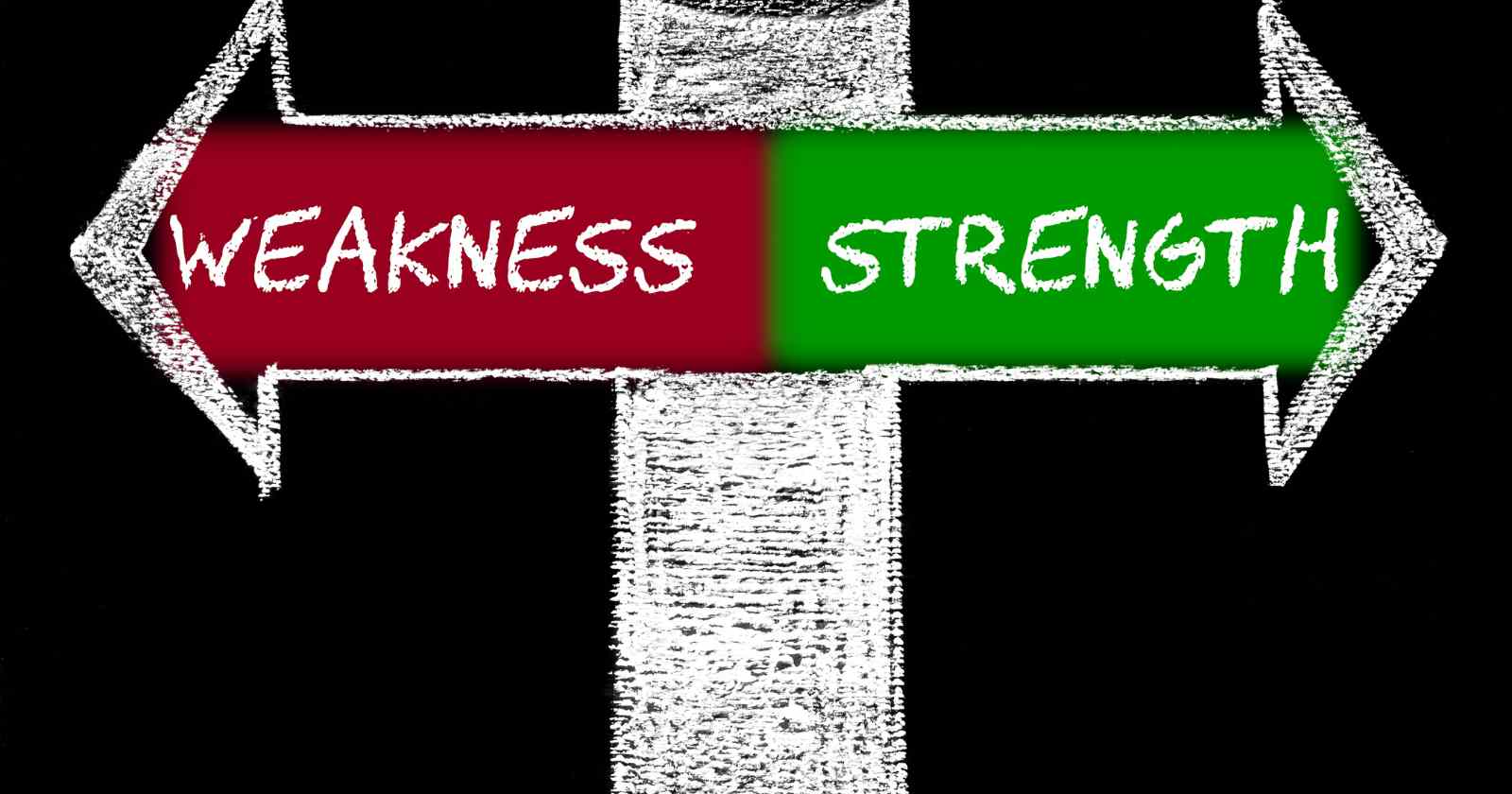The priest is assisted during the vesting by the Deacon. As each piece is put on, the priest says a prayer, the most important words of which will be excerpted below. But before the vesting is begun, the priest recites a long prayer that includes such significant lines as:
“O Jesus Christ our Lord, clothed with light as with a garment, you appeared upon earth….make me….also worthy…that I may divest myself of all ungodliness, which is a vile garment, that I may be
adorned with your light.”
The vestments in the order the priest puts them on:
The saghavart or crown (helmet)
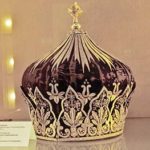 This bulbous, kingly headgear resembles the crown of a fairy tale king. Indeed it echoes the royalty of Christ the King as well as symbolizing the victorious liberation of the soul from bondage to evil. Traditionally, twelve arched pieces are joined to form a peak which is topped by a cross. This made its appearance after the thirteenth century and may have been inspired by Persian helmets.
This bulbous, kingly headgear resembles the crown of a fairy tale king. Indeed it echoes the royalty of Christ the King as well as symbolizing the victorious liberation of the soul from bondage to evil. Traditionally, twelve arched pieces are joined to form a peak which is topped by a cross. This made its appearance after the thirteenth century and may have been inspired by Persian helmets.
“Lord, put the helmet of salvation on my head to fight against the powers of the enemy.”
The helmet is put on first and then removed until the priest is fully vested.
The tunic or shabig (alb)
The tunic is a long white shirt that reaches the ankles. It is often embroidered at the hem, sleeves and neckline. Its white color is a symbol of purity of heart, just like the white that is worn by the newly-baptized. Records show that in the third century, white was a preferred color for priestly vestments.
“Clothe me Lord, with the garment of salvation and with a robe of gladness, and gird me with this vestment of salvation.”
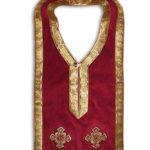 The Poroorar or stole
The Poroorar or stole
This long stole has a hole for the neck and is, in actuality, the Deacon’s stole that has been draped around the neck and sewn up in the center. It symbolizes righteousness.
“Clothe my neck, O Lord, with righteousness and cleanse my heart from all filthiness of sin.”
The kodi or belt
A fabric belt matching the cape that is worn over the poroorar. A symbol of the strength of faith and the priestly authority of binding and loosing.
“May the girdle of faith encircle me round about my heart and my mind and quench vile thoughts
out of them.”
The pazban or cuffs
These wide cuffs are the same material as the cape and are worn over the shabig on the forearms. They symbolize strength and moral cleanliness as well as the hard work and penitence required in the Lord’s service.
“Give me strength, O Lord, to my right (left) hand and wash all my filthiness of sin, that I may be able to serve you in the health of soul and body.”
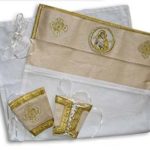 The vagas or collar
The vagas or collar
The stiff wide collar matches the cape in fabric and color. A long linen piece and ribbons allow the collar to be worn by crossing the ribbons to the front and then tying them in back. It has come to symbolize obedience and the yoke of Christ. From Matthew 11:29-30:” Take my yoke upon you and learn from me, for I am gentle and humble in heart and you will find rest for your souls. For my yoke is easy and my burden is light.”
“Clothe my neck, Lord, with righteousness and cleanse my heart from all filthiness of sin.”
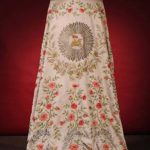 The shourchar or cape
The shourchar or cape
Made of a beautifully textured and ornamented fabric, the cape is a symbol of the glory of the new spiritual life and a shield-like defense against evil.
“In your mercy, Lord, clothe me with a radiant garment and fortify me against the influence of the evil one. My soul will rejoice in the Lord, for he has clothed me with a raiment of salvation and with a robe of gladness. He has put upon me a crown as upon a bridegroom and has adorned me like a bride with jewels.”
The tashginag or towel
An oblong piece of linen hung on the left side of the belt, the towel is used by the priest at certain moments of the liturgy, for example, to dry his hands after rinsing them ritually in water or to dry the chalice after distributing communion. It indicates spiritual cleanliness.
The hoghatap or slippers
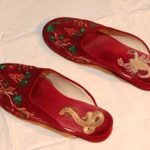 Since regular street shoes would be inappropriate for the altar of God, richly ornamented fabric slippers, like bedroom slippers, are worn. They symbolize the fact that Christ tramples evil underfoot. There are many decorative designs possible but traditionally snakes and scorpions are featured as in Psalm 91:13:
Since regular street shoes would be inappropriate for the altar of God, richly ornamented fabric slippers, like bedroom slippers, are worn. They symbolize the fact that Christ tramples evil underfoot. There are many decorative designs possible but traditionally snakes and scorpions are featured as in Psalm 91:13:
“You will tread upon the lion and the cobra; you will trample the great lion and the serpent.”
The saghavart or crown (helmet)
The crown is again put on, as the last item in the vesting process.
Reprinted from 2001 Department of Religious Education, Diocese of the Armenian Church

